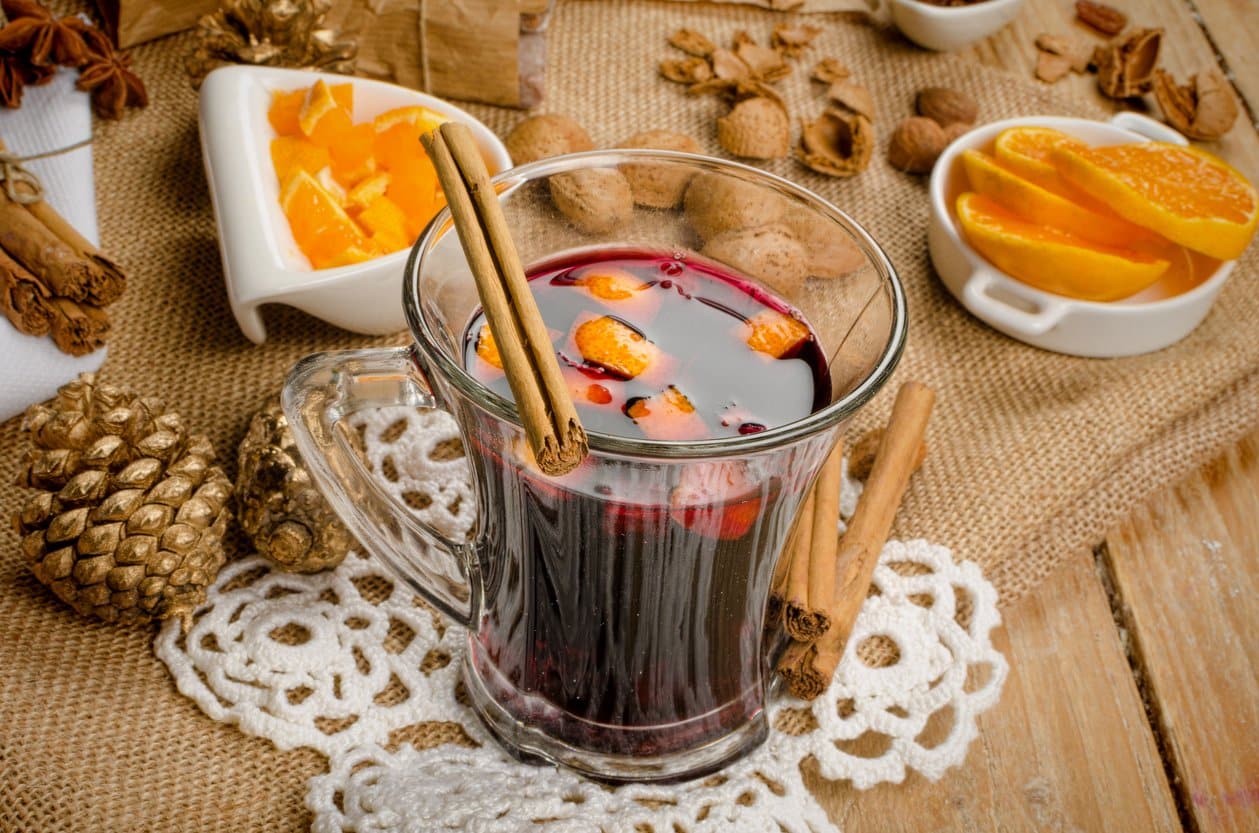When the temperature goes down outside, the temperature of beverages increases. While it’s not quite as popular in Australia as in Europe, a hearty warm wine is just sensational in front of an open fire in our colder months. You just have to try one of these.
German mulled wine: Glühwein
Glühwein in German roughly means “glowing-wine” due to the look it gives as it boils.
Glühwein is usually made from red wine and is heated and spiced with cinnamon sticks, cloves, star aniseed, citrus, sugar and sometimes vanilla pods. Germans often drink with a mit Schuss, or a shot as we call it, of rum or some other alcohol. Fruit wines, such as blueberry wine and cherry wine, are also used instead of grape wine in some parts of Germany. Some variations of Glühwein may also use white wine, though it is less popular than the red version.
For children, Kinderpunsch is offered at Christmas markets, which is a punch with similar spices but obviously no alcohol.
Glühwein is popular in German-speaking countries and also in the region of Alsace in France. It is a traditional beverage offered during the Christmas holidays. In Alsace Christmas markets, it is traditionally the only alcoholic beverage served.
The invention of Glühwein is normally attributed to Count John IV of Katzenelnbogen, a German nobleman who was the first grower of Riesling grapes.
Another popular variant of Glühwein in Germany is the Feuerzangenbowle. It shares a similar recipe, but this drink requires a rum-soaked sugarloaf set on fire which drips into the wine.
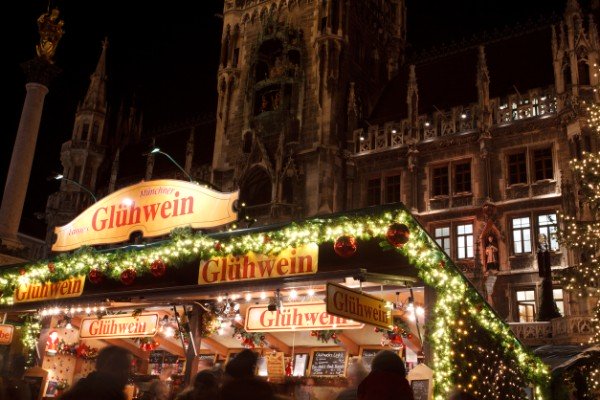
Nordic mulled wine: glögg
Gløgg (pronounced ‘glurgg’) is a mulled wine that is drunk at Christmas time in Norway. Much like Gluhwein, it is made with cloves and cinnamon, and served warm with some almonds and raisins. Traditionally, gløgg is made from expired red wine as the Norwegians don’t like letting anything go to waste. The added spices and honey make the wine drinkable again. A non-alcohol version is used for children which obviously is made without the wine. Gløgg is so popular in Norway that parties are centred around them ahead of Christmas. These parties usually serve gløgg with risgrøt, a Norwegian style of rice pudding.
To make producing it quick and easy, glögg spice extract and ready-mixed spices can be purchased in grocery stores throughout Scandinavia. When preparing homemade glögg using spices, the hot mixture is left to infuse for at least an hour, often longer, and then reheated before serving. Ready-made wine glögg, as well as low or non-alcoholic versions are also available in stores.

Swedish mulled wine: snaps
Swedish snaps is a warm winter drink in Sweden that is traditionally served in a small long-stemmed ‘snaps glass’. These glasses are a big deal with specialist companies hand-making them with pristine glass making techniques.
A glass of snaps (which you may know by the German name schnapps) may be big or small and is distilled from grain or potatoes before being spiced in an endless variety of natural ingredients like fruits such as blackcurrant.
In Sweden it is customary to offer guests a snaps when herring (a popular type of fish to cook in Sweden) is served. At Christmas, snaps glasses are decorated with the Swedish equivalent of Santa Claus. The Swedes will also often sing traditional drinking songs with their snaps such as the most popular one ‘Helan går’.
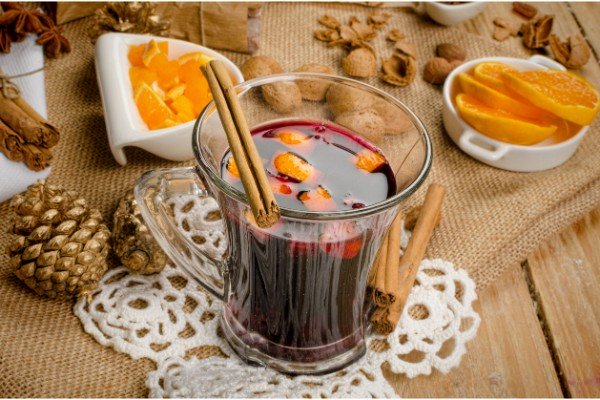
Balkan mulled wine: kuhano vino
A warm winter drink in Eastern Europe is kuhano vino/kuvano vino/кувано вино which is cooked wine in Croatia, Montenegro, Slovenia and Serbia respectively.
Despite the different names across the different languages, the drink is the same and made from red or white wine and uses combinations of nutmeg, cloves, cinnamon, sugar and orange zest. It’s also often served with slices of orange or lemon.
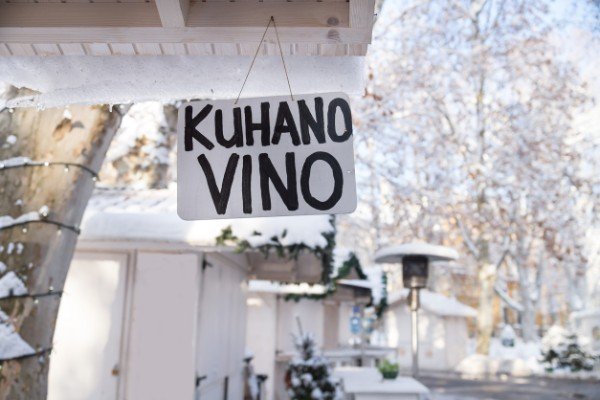
Brazilian mulled wine: vinho quente
In the south and southeast of Brazil (a large amount of European descendants live in that area of the country), it is called vinho quente. It is typically made with red wine, cinnamon sticks and cloves. It is served as part of the Festa Junina which is celebrated during winter in the month of June.
Bulgarian mulled wine: greyano
In Bulgaria, it is called greyano vino (in Bulgarian it is греяно вино) which translates as “heated wine” and consists of red wine, honey and peppercorn. Fruits like apples and/or citrus fruits, such as lemon or oranges, can be added.
Chilean mulled wine: candola
In Chile, their mulled wine is called “candola” or can be known in the south as “vino navega’o”. Navega’o is a hot drink made from red wine, orange peels, cinnamon sticks, cloves and sugar. Although being more popular in southern Chile where it is colder, it is served throughout the country. It’s very popular on Saint John’s Eve (a Spanish tradition that replaced ‘Wetripantru’, the Mapuche New Year’s Day that coincides with the winter solstice in the southern hemisphere) which is on the evening of 23 June.
Czech mulled wine: svařené víno
In the Czech Republic, mulled wine is called svařené víno which translates as “boiled wine”, colloquially it is known as svařák.
Polish mulled wine: grzane
In Poland, grzane wino (“heated wine”), or grzaniec in highlander dialect, is very similar to the Czech variant, especially in the southern regions. Mulled beer is also popular in Poland known as “grzane piwo” which is popular with Belgian beers because of the sweet flavour of that particular type of beer. It uses the same spices as the mulled wine and is heated.
French mulled wine: vin chaud
In France, it is known as vin chaud which translates as “hot wine”. Again it is normally a mix of red wine combined with honey, cinnamon and orange. It must not be too sweet. This beverage is known in the Alps for winter sports enthusiasts.
Vin Chaud distinguishes itself from Europe’s other warm wine beverages with its use of orange peel, for a hint of citrus and the addition of honey and cinnamon. Sold at bars and Christmas markets, and made by the litre in homes around France, Vin Chaud isn’t difficult to make—but you do need a recipe to nail the infusion of spices and temperature.
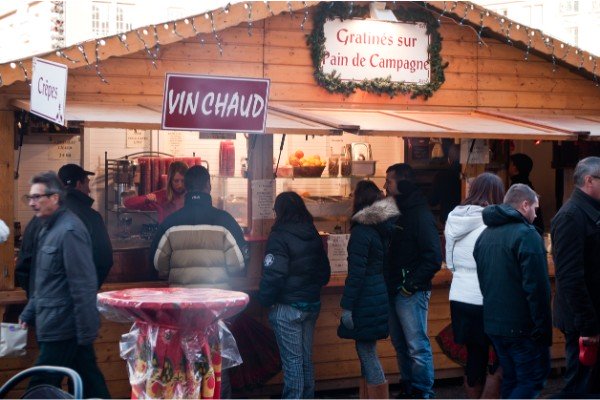
Hungarian mulled wine: forralt bor
In Hungary, forralt bor (“boiled wine”) is typically made from the country’s popular Egri Bikavér and spiced with cinnamon, sugar and cloves. Sometimes Amaretto is added for extra taste.
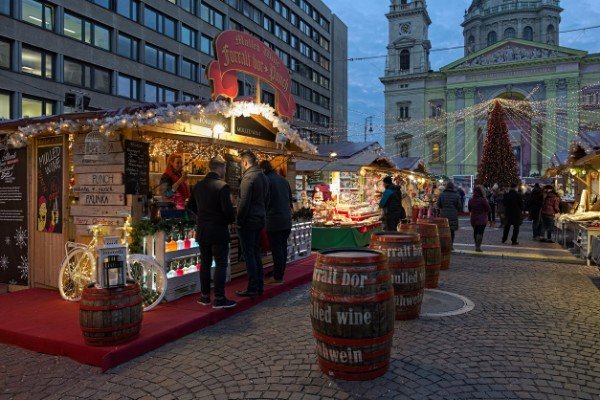
Italian mulled wine: vin brulé
In Italy, mulled wine is typical in the northern part of the country and is called vin brulé (from the French vin brûlé, “burnt wine”, though the expression is not used in France). The main difference between mulled wine and vin brulé is in the preparation. Vin brulé is usually boiled until no alcohol remains (a process sometimes accelerated by lighting a flame on the surface). Mulled wine instead is only warmed up for a short amount of time and at lower temperatures to preserve the alcoholic content of the wine. Occasionally, a shot of brandy or sherry is also added at the end for an extra bite.
Latvian mulled wine: karstvīns
In Latvia, it is called karstvīns (“hot wine”). When out of wine, it is prepared using grape (or currant) juice and Riga Black Balsam.
Lithuanian mulled wine: glintveinas
In Lithuania, it is called “glintveinas” or karštas vynas (“hot wine”).
Macedonian mulled wine: vareno vino
In Republic of Macedonia, it is called vareno vino (Macedonian: варено вино, boiled wine) or greeno vino (Macedonian: греено вино, heated wine) and is usually served in late autumn or winter. It is made of red wine, usually from the Tikvešh region, combined with cinnamon and sugar or honey. The wine heated in a combination with pepper is used as a prevention from flu or cold.
Moldovan mulled wine: izvar
In Moldova, the izvar is made from red wine with black pepper and honey.
Dutch mulled wine: bisschopswijn
In the Netherlands, the drink is known as bisschopswijn (literally “bishop’s wine”). Bisschopswijn is drunk during the Sinterklaas holidays.
Portuguese mulled wine: vinho quente
In Portugal, mainly in the Douro and Minho Provinces, it is called vinho quente and is made with Madeira wine and Port wine. In the Porto region, porto quente is more popular.
Romanian mulled wine: vin fiert
In Romania, it is called vin fiert (“boiled wine”) and it is made using red wine, adding sugar, cinnamon, nutmeg, cloves, anise and orange zest. Everything is boiled and served hot.
Russian mulled wine: Glintwein
In Russia, their mulled wine is Глинтвейн or “Glintwein” and it has a similar recipe as the German Glühwein. Additionally, the traditional Russian winter drink is the herbal “sbiten”. This is a non-alcoholic herbal tea made with hot water or in true Russian style it can also be made with red wine to replace some or all of the water.
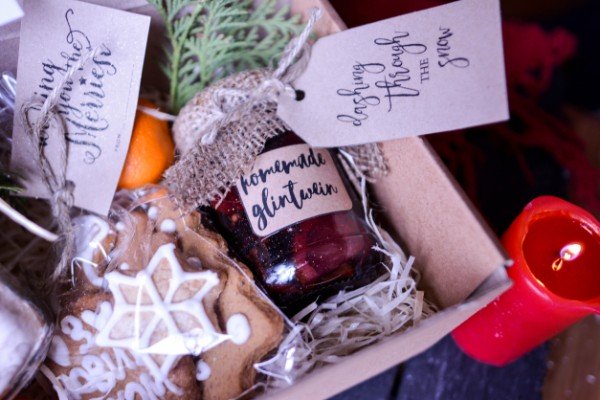
Turkish mulled wine: Sıcak Şarap
In Turkey, it is called Sıcak Şarap (“hot wine”) and can be made using sweet red wine, adding sugar and fruits such as lemon and orange. The classical sweet wine for this use used to be the now discontinued “Hoşbağ” brand of the former Turkish state monopoly “TEKEL”.
Canadian mulled wine: Caribou
Aboriginal Canadians are believed to have first consumed caribou blood to keep warm post-hunt and the idea was adopted by French settlers, who introduced alcohol into the mix. Today, caribou (often hand-mixed but now sold in stores in Quebec) is a little different. If you’ve ever caught a chill at the Festival Du Voyageur or the Carnaval De Quebec, you might have tasted the warming effects of this French Canadian classic, usually consisting of sherry, port, whisky and vodka, sweetened with sugar or maple syrup.
In Quebec, red wine is mixed with maple syrup and hard liquor and then heated. The drink is also called Caribou and is very popular during the Quebec Winter Carnival.
The health benefits of mulled wine
You’ve probably heard many people proclaim that a glass of wine a day is in fact good for your health. Well, it is true that wine contains a lot of antioxidants that can prevent heart disease and unclog arteries. There are also antioxidants called polyphenols, including resveratrol, in wine that can keep you looking younger for longer.
Adding some other natural ingredients boosts the nutritional benefits. Cinnamon also contains a tonne of antioxidants which is good as an anti inflammatory. Nutmeg is found in some mulled wines and boosts overall health by cleaning out the liver and kidney of all toxins stored in there.
1. Cinnamon is added to some mulled wines (including MaZi’s version here at Lantern Club) and is rich in antioxidants as well as vitamin A and C, which help fight ageing and diabetes.
2. The oils produced from star anise contains thymol, terpineol and anethole, which are good for avoiding colds and flus.
3. Anise can also help improve digestion, alleviate cramps and reduce nausea.
4. Consuming star anise in tea form after meals can help treat bloating, gas, indigestion and constipation.
5. If you’re looking for a little more love, drinking a glass of water infused with the crushed seeds of star anise at night can increase sex drive!
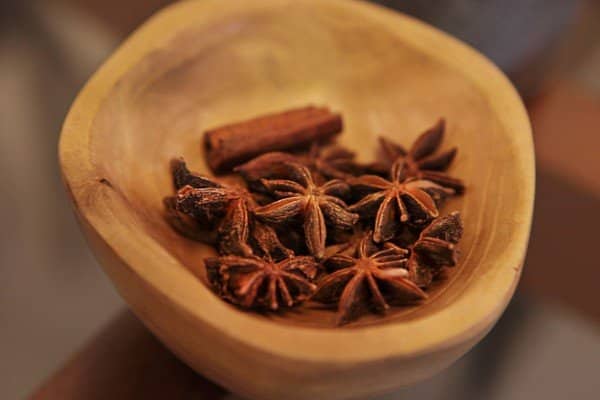
MaZi’s Mulled Wine Recipe
Lantern Club’s team have been preparing and taste testing our own home brew of mulled wine as part of our winter warmer season.
The ingredients:
1 bottle of Cabernet Merlot
2 Cinnamon sticks
8 cloves
100g white sugar
1 whole orange
2 star anise
The method involves placing the ingredients in a pot and leaving them to sit overnight to infuse maximum flavour. The mix is then heated up and served fresh.
Come taste a mulled wine at Lantern Club
This winter, Lantern Club will be offering complimentary mulled wine upon entry on selected nights. Our secret recipe mulled wine goes hand in hand with fresh chestnuts hot out of the oven as well. Mulled wine is also available to pruchase at the bar fresh out of the pot.
To book a table in MàZi call 8037 8200.
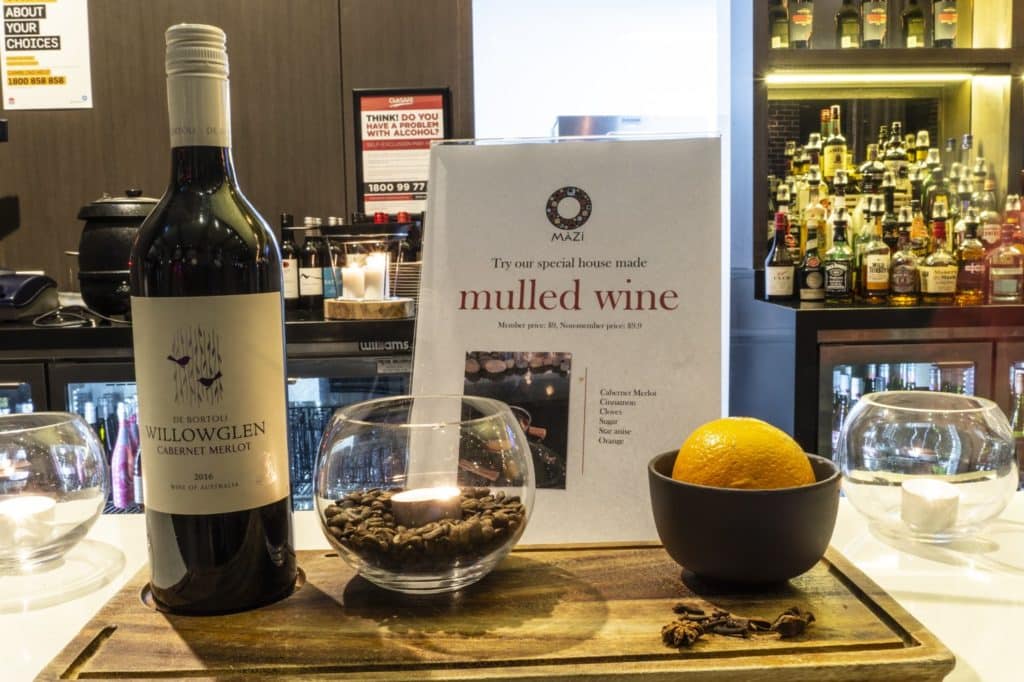
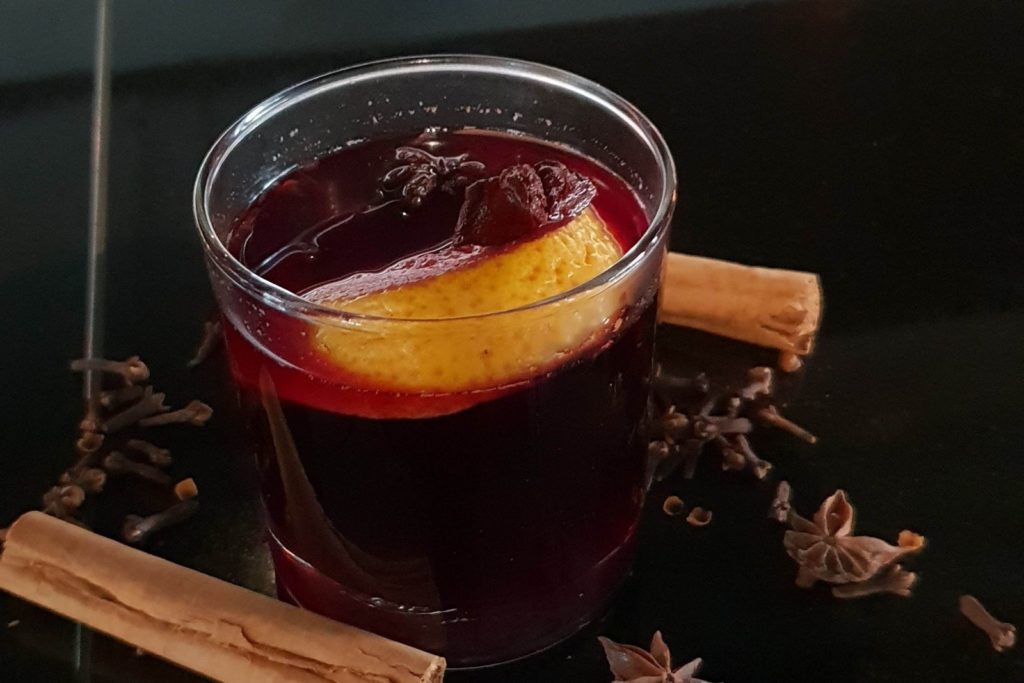
[web-specials]
Simply register your order below, then go to Lantern Club’s Reception to collect your purchase. It’s that easy!

